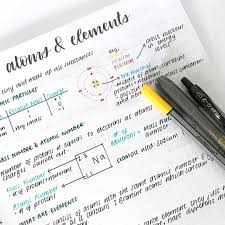TAKING LECTURE NOTES
Bella_blossoms welcome you
❤❤❤❤❤❤❤❤❤❤

What is note taking?
Note taking is the practice of writing down pieces of information in a systematic way.Different ways to take lecturer notes

- Taking lecture notes on a computer or tablet
However, using a machine does have its downsides. First, there’s the world of social media and the Internet at your fingertips which can be an easy distraction. Second, the note-taking process is usually quite linear – you start at the top of the page and work your way down. This isn’t ideal for those who are visual-spatial learners, or if you don’t consolidate information well in long-written form. Moreover, when typing, students tend to write out verbatim what is being said by the lecturer. They’ll often focus more on typing everything out, instead of trying to really understand the material.
If you want to take lecture notes on a laptop or tablet, give yourself the best chance of success by being prepared. Learn how to type quickly, and create or learn a variety of shortcuts and abbreviations, to save yourself even more time during lectures. You also may need to create lists or tables, so knowing how to do this quickly can be particularly valuable.

- Taking lecture notes on paper
In any case, taking lecture notes by hand is the obvious choice for some subjects – notably maths and languages – where the material isn’t always linear text.
Taking lecture notes with pen and paper arguably has its benefits. But if you want to take your lecture notes this way, there are still skills and techniques you need to familiarise yourself with.
You might consider having one notebook for each class. This generally keeps things better organised. You’ll also want different coloured pens or markers so that you can make sure those important things from the lecture are represented clearly in your notes. Finally, you must be able to write clearly. Your notes are no good to you if two weeks down the road all you see is illegible chicken scratch!
When to take lecture notes?
When is really the best time to take lecture notes? The short answer is: often. Actually, you should take notes before, during and after each lecture. This means taking notes whilst you’re doing any preparatory reading, as well as when you are listening in class. And, you need to review your lecture notes periodically after the lecture is finished. This can be done on a weekly basis, and then more frequently in the lead up to any exams or essay assignments.
- Taking notes before a lecture
Before any lecture you need to do the assigned readings, at least to some extent. Your professors often tell students that this is an essential component of learning the course material (or having success in lectures). And yet, few students actually heed this advice.
So, do the reading. And whilst you’re at it, take notes. The benefits here are three-fold (at least). First, familiarising yourself with the lecture material in advance will mean you’re clued up on what will be discussed, and you can spend more time in the lecture focusing on the important bits. Second, going over the material at least twice will help you commit it to your long-term memory (great for exams). And third, you can jot down any questions you might have and ask them during, or after, the lecture.
- Taking notes during a lecture
During the lecture it can be hard to know what to write down. Essentially, you only want to write down the main important points. You do this by becoming a really good listener. The trick to taking good lecture notes is to avoid the tangents your professor will take you on and try to pinpoint the stuff that is going to be on an exam or in an essay. Your professor is going to give you cues about what will be on the test. This will happen through some significant key phrases or signposts.
These might include:
- “You need to know X” OR “X might be on the test”
- Anytime the professor repeats himself/herself
- Anything written on the board
- Anything the professor says more loudly or with more emphasis
- Anytime there is a relationship (e.g. first…second…finally)
- Anytime there are significant signposts (e.g. especially, most significant, consequently, etc.)
There are probably many more cues that your professor will use in the creation of their lectures. Careful listening will turn you into a more efficient note-taker.
As a side note, remember that what you do and do not take away from the lecture are equally important. Did you have unanswered questions, or did your mind wander and miss a point? If the answer is yes, it is important to get these addressed earlier rather than later to make sure that you have a complete set of notes.
- Taking notes after a lecture
Taking great lecture notes before and during your lecture, but then leaving them to collect dust, is a waste of your time. Soon after the lecture is done, spend some time reviewing your notes and clarifying any points that may seem a bit vague. A few minutes on the same day, plus 10-15 minutes a few days later, will be enough.
Also, you need to consolidate the notes you took when reading, and the notes you took during the lecture. Compare them side by side. Look at the different pieces of information and try and make sense of what you have written. Organise them in a way that is logical to you. Some might call this a master outline, but essentially what you are doing is figuring out the main ideas and putting them all down in a logical way.
COMMON NOTE TAKING METHODS
Let's learn about methods of note taking using this video.
❤❤❤❤❤❤❤❤❤❤
Thank you very much because you are willing to spend your precious time to visit my blog.
See you soon!! <3


Ulasan
Catat Ulasan